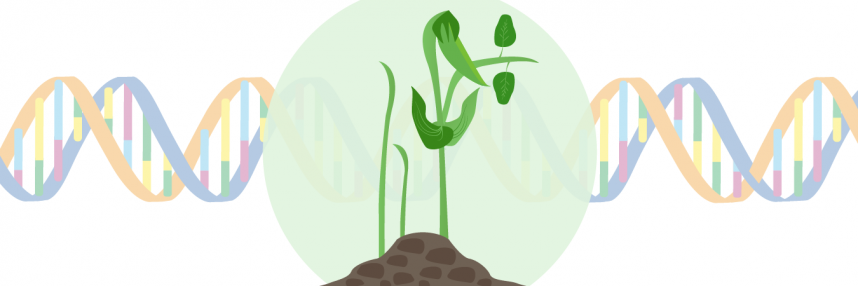Mendel: Influence and inheritance
We celebrate the father of genetics’ 200th birthday and explore the ways his influence still extends through to us today
Gregor Mendel was born 200 years ago this week, on the 20 July 1822. Known for his pea plant experiments, Mendel is now regarded as the ‘father of genetics’ because he worked out so much about how traits are passed from one generation to the next, despite living long before anyone had heard of DNA, chromosomes or genes.
Here we celebrate how Mendel’s work has contributed to our understanding of genetics and explain what we mean when we talk about his brand of inheritance.
Mendelian inheritance
Mendelian inheritance refers to conditions or traits that are caused by a single gene and passed from one generation to the next in a predictable way. Mendel first observed these patterns in his garden peas, allowing him to determine probabilities of a trait recurring across generations.
One example of a mendelian trait would be the rhesus blood antigen – a person is either rhesus positive or negative, with no other possible options. This is different to continuous characteristics, such as height and skin colour, which tend to be influenced by many genes and cannot be predicted in the same way.
Diploid and haploid
Mendel worked out that each person carried two ‘factors’ (what we now call genes) for each characteristic, with one inherited from each parent.
In effect, he understood that his peas are what we call ‘diploid’ (having two complete sets of chromosomes) and that their gametes (ova and pollen) contain one set each (haploid) so that the offspring end up with two full sets like the parents.
He also wrote that if a parent had two different versions of the gene, half of the gametes would contain one ‘factor’ and half the other, so both versions of a gene should have an equal probability of being represented in the next generation.
Mendel did not know about how his ‘factors’ were encoded in cells but his rule of ‘independent assortment’ said that when looking at two different traits, they would be randomly mixed up in each generation, so each gamete, while containing only half an individual’s DNA, would be a mix of genes they inherited from their mother and father.
This rule is certainly true for genes on different chromosomes but can break down when it comes to genes that are close together on the same chromosome – a phenomenon modern geneticists call linkage.
Dominant or recessive?
One of Mendel’s most influential observations was that a ‘factor’ could be dominant or recessive. If an individual had one copy of the dominant allele and one the recessive, they would appear to be the same as another individual with two dominant copies.
By studying traits across many generations, however, Mendel saw that the recessive factor could still be passed on, and the recessive trait would re-emerge when offspring inherited two recessive copies.
Many genetic conditions display mendelian inheritance patterns, some dominant (for example, Huntington’s disease) and others recessive (like cystic fibrosis). How a certain condition is inherited plays an important role in healthcare, helping to identify individuals that may be affected by the condition and to understand wider implications for families, including reproductive concerns.
As we continue to learn more about genomics – far beyond what Mendel could have imagined or understood 200 years ago – his work remains a poignant and important touchpoint for our understanding of inheritance and our journey from peas to personalised medicine.
To learn more, watch The Genetics Society’s unique ‘garden party’ livestream which celebrated Mendel’s remarkable milestone with a range of guest speakers.
–
Please note: This article is for informational or educational purposes, and does not substitute professional medical advice.









